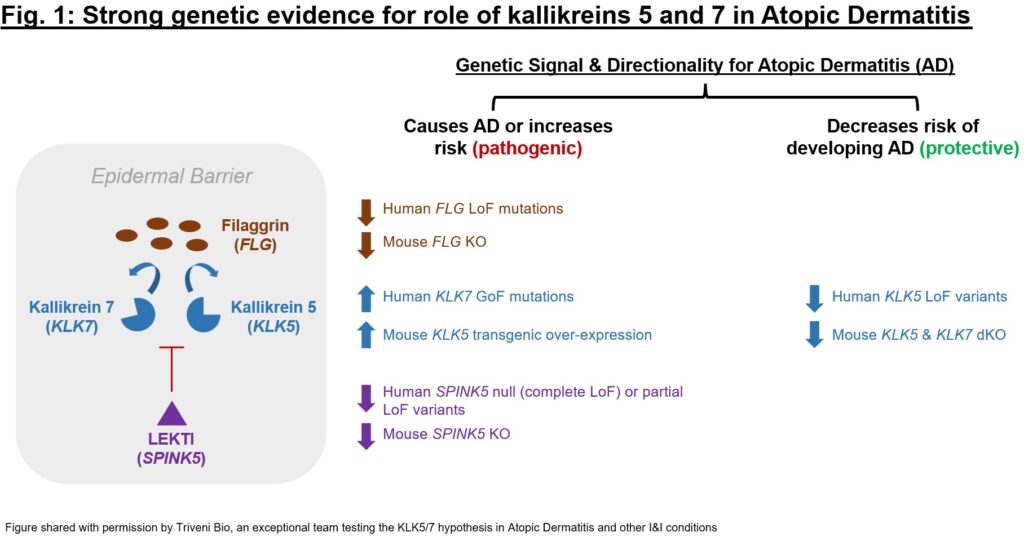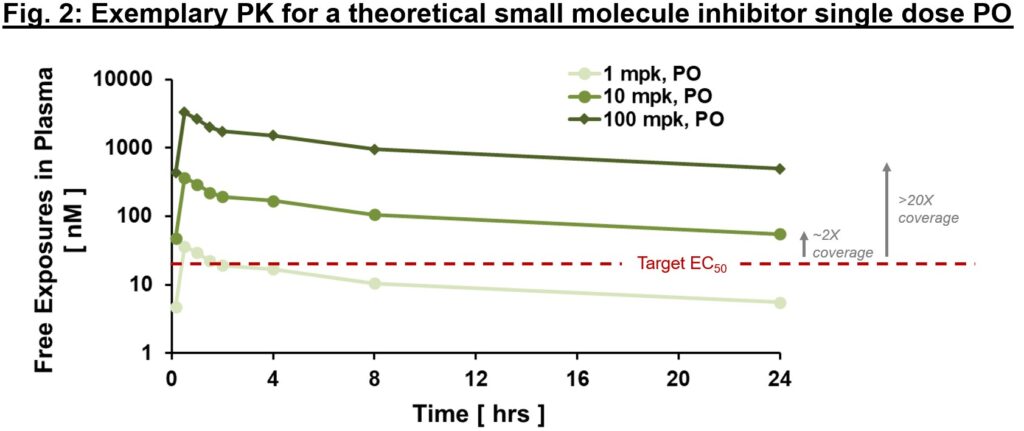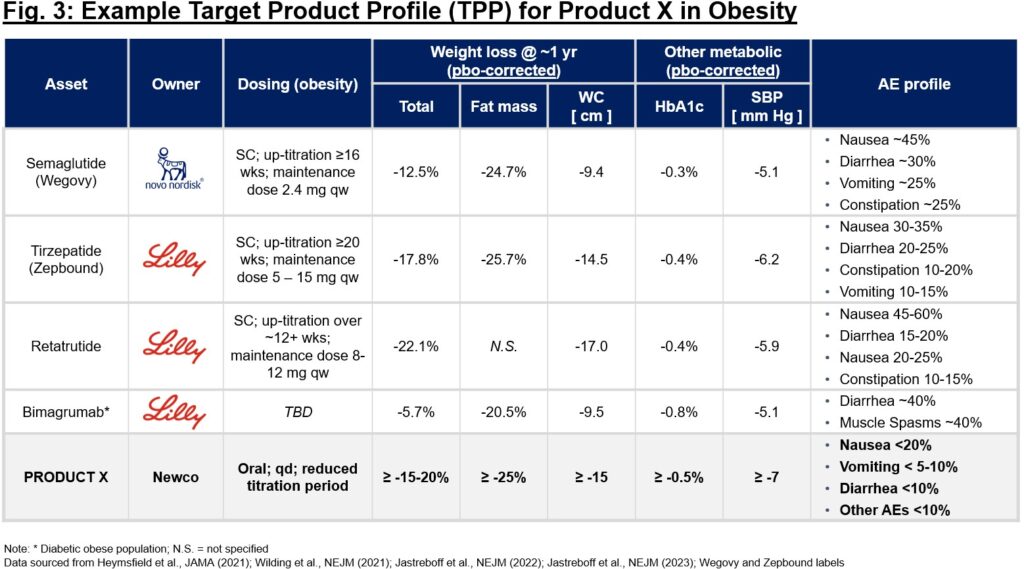By Aimee Raleigh, Principal at Atlas Enterprise, as a part of the From The Trenches characteristic of LifeSciVC
Ever questioned what goes into diligencing a brand new concept, program, firm, or platform? Whereas every diligence is exclusive and each investor could have their very own strategy, under are some issues that could be extra “typical” in a diligence. I’ll emphasize the apparent disclaimer earlier than diving in – this framework is merely meant to be exemplary and there are at all times nuances and exceptions distinctive to every diligence. Moreover, for illustrative causes that is geared in the direction of a single goal / product focus vs. broader platform diligence, although many of those psychological fashions will apply for choosing targets and indications for a platform. Typically persons are disillusioned to be taught there is no such thing as a official guidelines buyers use throughout a diligence, however that’s the fantastic thing about working within the advanced area of early-stage therapeutics!
How does one take into consideration therapeutic relevance for a brand new goal? This can be an exemplary take a look at issues I usually think about when diligencing a brand new alternative for firm creation, together with key ideas and psychological fashions.
Goal validation: Can we consider the goal(s) performs a central position in illness biology and that modulation will modify illness?
There’s a continuum of proof for a given goal – at one finish are novel targets with some proof of significance in illness, and on the different finish are “de-risked” targets the place the biology is precedented with an authorised product or late-stage medical asset(s). I’ll word that “de-risked” is rarely totally risk-free in therapeutics investing, as even precedented mechanisms hit hindrances in preclinical or medical improvement. The extent of consolation with novelty of a goal speculation would possibly fluctuate for an investor relying on the stage at which they usually make investments. Within the early-stage setting, we diligence and conceive of our personal newco concepts throughout the spectrum of validation. There may be nothing extra thrilling than digging into a brand new goal and attempting to develop a thesis on whether or not modulation could also be impactful in illness. Is a novel goal on the inflection level the place sufficient proof is accessible to counsel it could show to be a compelling drug? Within the absence of a medical trial consequence or FDA label to level to, how does one create the case and goal product profile (TPP) round a brand new goal?
With a purpose to begin constructing a case for or towards a goal, I like to begin with genetics – first human after which mouse. Are there recognized genetic ailments related to the goal? In that case, are these Mendelian or advanced polygenic ailments, and if the previous is the inheritance sample autosomal recessive or autosomal dominant? Is the performance of mutations recognized? How heterogeneous are the noticed phenotypes? Solutions to the above questions assist to develop a thesis round any allelic “dose response” – for instance if heterozygotes exist with a gentle phenotype and homozygous or compound heterozygous people have extra extreme illness. Along with Mendelian genetics, what will we learn about any genetic modifiers – any compelling findings from GWAS, WES, and many others.? Are the phenotypes related to mutations discordant or do they level in the direction of a possible underlying biology with compelling impact dimension? Do mouse genetics line up with the human story? If any confounding information, is there a believable rationale for the divergent phenotypes?
As soon as a person goal is evaluated, I’d develop to a broader pathway. Are there close by targets up- or down-stream from the novel goal of curiosity which have genetics validation? General, are the “indicators” from this display suggestive of believable biology? Genetic information for the goal can provide a primary glimpse at whether or not there’s a tractable speculation to dig into. One instance of such a genetics train is represented in Fig. 1, which depicts the sizeable quantity of genetics proof for kallikreins 5 and seven (KLK5 and seven), two serine protease targets with a job in barrier dysfunction and immune dysregulation. For KLK5 and KLK7 in addition to their endogenous regulator (LEKTI, encoded by SPINK5) and one among their substrates (filaggrin, FLG) there may be proof that KLK5 and seven up-regulation is pathogenic and down-regulation protecting in epidermal barrier dysfunction (particularly for Atopic Dermatitis). The cumulative genetics proof was so compelling that the distinctive staff at Atlas portfolio firm Triveni Bio is concentrating on each kallikreins in a twin antagonist antibody presently in IND-enabling research.
Human and mouse genetics can inform not solely efficacy but additionally security. The best goal is one the place modulation is not going to drive adversarial phenotypes in wholesome people, which is essential if one intends on trialing in wholesome volunteers in Part 1 but additionally offers consolation for persistent goal modulation. If adversarial occasions are anticipated, it is very important perceive gene dosage for such an impact (e.g., adversarial profile seen in homozygous null people however not in heterozygous carriers?) and whether or not a molecule’s pharmacology will help to mitigate security danger. Lastly, as a part of a broader pathway evaluation, think about potential implications for selectivity. Particularly for oligo or small molecule discovery and improvement, it’s essential to grasp whether or not there are extremely homologous sequences or proteins that could be impacted by a given therapeutic strategy.
Whereas supportive genetics aren’t completely required to maneuver ahead with a novel goal, they definitely assist to drive conviction in potential medical relevance. Instructed sources for this primary move genetics diligence embody OMIM, GWAS Catalog, DisGeNET, OpenTargets, Genebass, and the Worldwide Mouse Phenotyping Consortium.
Directionality and Druggability: Does the proposed “route” of insult and therapeutic intervention make sense, and might we drug our novel goal with a compelling modality?
From the above genetics exploration, is the purposeful affect recognized? In most simplistic phrases this could normally be diminished to “achieve of operate” (GoF) vs. “lack of operate” (LoF) impact, however may also be fairly nuanced (e.g., some phenotypes may be pushed by each LoF or GoF mutations, or performance may be troublesome to characterize for variants). As soon as a route of pathology is set, how would possibly one intervene?
- For inhibition, is a small molecule or antibody-based strategy finest, or is the etiology tissue-centric in order that an oligo, gene enhancing, or different technique would possibly deal with (e.g., in liver, in CNS)?
- To impart “gain-of-function” pharmacology, think about inducing or up-regulating expression (e.g., with gene enhancing or gene remedy, enzyme alternative remedy), agonism (e.g., with antibodies), or correction (e.g., within the case of CFTR for Trikafta). Contemplate whether or not there may be sufficient (partially purposeful) goal that remaining to agonize or appropriate – if not, can wild-type up-regulation deal with the pharmacology, or does the goal protein should be completely changed?
The modality will should be paired with the “geography” wherein illness modification is required. Factoring in each efficacy and security, is that this a systemic or localized strategy? Are there supply approaches to assist obtain extra localized supply? Whereas supply approaches have quickly superior over the previous few years (e.g., TfR1 mind or muscle “shuttles” enabling increased tissue exposures and exercise for antibodies, enzymes, and / or oligos), there are nonetheless modalities and tissues for which supply is the important thing problem for profitable therapeutic intervention.
Pharmacology: Is that this the “proper” molecule, does it get to the specified location within the physique for the meant period of time, and does the impact of the molecule on the physique make sense?
To attain the specified biology, we will need to have conviction {that a} remedy can (1) get to the specified goal with ample exposures over a sure time period (pharmacokinetics/PK readout), (2) work together with the goal within the desired trend, enacting proximal and distal “downstream” biology (pharmacodynamics/PD readout), and (3) modify the illness in a method to alter the medical course (efficacy readout). When diligencing a brand new goal, if there are “software” molecules with information within the literature, gaining confidence in an publicity/PD/efficacy relationship will help construct confidence within the goal and mechanism. Within the best-case situation, one can construct a thesis on publicity multiples over EC50 required to impact desired biology, as in Fig. 2., primarily based on “software” molecule precedent.
Given pharmacology could be a matter of its personal, a colleague within the Atlas portfolio, Haojing Rong, has helped creator a companion pharmacology weblog publish – if of curiosity in double clicking on this matter, please keep tuned for tomorrow’s publish!
One level to emphasise within the pharmacology diligence is availability and suitability of biomarkers. These can vary from “proximal” goal engagement readout (e.g., PCSK9 transcript knockdown) to extra distal pharmacodynamic measures (e.g., LDL-c decreasing). Typically for a brand new goal, the biomarker thesis will should be developed and validated with in vitro and in vivo assays. When diligencing a brand new mechanism, think about fastidiously the totality of biomarkers obtainable in addition to which can be prioritized for in vitro screening assays and in vivo PD readouts. Ideally a number of totally different PD markers may be leveraged to enhance translational read-through and cut back chance of drug discovery attributable to an misguided or assay-driven sign. In case you are evaluating a novel goal with out a clear biomarker technique, think about the heavier raise that may seemingly be concerned in early discovery assays.
Path to medical “Proof of Idea” (PoC): What does the trail appear like to fund discovery and improvement of a program by medical efficacy readouts?
Totally different buyers could have consolation with various “beginning factors” within the drug discovery funnel; firm builders will seemingly have expertise throughout the spectrum from goal nomination to Part 2 asset in-license, whereas different buyers could choose to take a position at improvement candidate (DC) nomination stage or later. What tends to be unifying is buyers’ need to fund by key de-risking milestones in a given financing. Steadily, de-risking is perceived as “proof of idea” (PoC) within the clinic for the lead asset, which is often a Part 1b or Part 2a trial in a desired affected person inhabitants with a registration (or directionally translational to registration) endpoint readout. Actually there are different inflection factors that could be significant, and these fluctuate relying on whether or not there may be any medical precedent for the mechanism or the extent of validation doable by way of genetics and pharmacology fashions. These different inflection factors embody IND clearance, Part 1 MAD information (which, particularly for indications resembling weight problems the place wholesome volunteer information is well-precedented as a benchmark, can drive substantial worth), and Part 1 security datasets if adversarial occasions are a priority for the mechanism.
Finally buyers will need to achieve consolation that there’s a well-conceived plan for de-risking the goal thesis, and the plan may be financed with enterprise {dollars}. When contemplating a brand new goal speculation, think about whether or not there are any alternatives for acceleration within the type of “software” compounds or beginning substrate (from the patent or different literature) for a extra focused medicinal chemistry, antibody discovery, and many others. marketing campaign. Alternatively, are there potential present belongings that could be obtainable for in-licensing, particularly if the potential licensor has pivoted strategic instructions (i.e., asset has not been de-prioritized attributable to security or efficacy)?
Finally, having a transparent view of what a PoC trial appears to be like like (desired affected person inhabitants and key inclusion/exclusion standards, main vs. secondary endpoints, size of trial, typical recruitment timelines, and many others.) helps in planning, even within the early discovery stage. Trial issues will in the end inform nonclinical research resembling GLP tox, and can function the premise for timeline and price range discussions round a fundraise. When contemplating a novel goal thesis, think about fastidiously the specified PoC inflection level by which you hope to fund by, and work backwards type there in creating the sooner nonclinical and medical necessities to allow that PoC trial.
Product alternative: If a drug is efficiently found and developed, will it matter to sufferers and different stakeholders?
The product thesis is of nice significance within the starting stage of any firm (no matter whether or not asset- or platform-centric). Contemplate anticipated time to market (not simply time to the clinic), competitiveness of the mechanism itself and broader competitors for the indication at giant, and potential affect on affected person lives ought to discovery and improvement achieve success. It’s important to crystallize a goal product profile (TPP) early within the technique of diligencing a brand new goal, even when utterly theoretical. Utilizing a “base case” vs. “upside” TPP, one can (in)validate the therapeutic profit speculation and ensure whether or not it will likely be differentiating if drug discovery efforts are profitable. This TPP can function substrate when pressure-testing a thesis with KOLs, sufferers, buyers, and others. Should you can’t garner pleasure on the TPP alone, that is perhaps an indication to rethink the unmet want and differentiation thesis. Contemplate Fig. 3 – early benchmarking of aggressive profiles will help elucidate the label traits that make a brand new profile enticing or not. On this case, given the crowded weight problems market, confidence in a best-in-class profile that may provide a differentiated resolution to sufferers and can garner eventual adoption by physicians and reimbursement by payers is vital earlier than embarking on discovery and improvement.
To sum it up, each diligence normally entails some taste of goal validation, confidence the goal may be drugged in the correct route, perception within the pharmacology (or clear path to proving or disproving the PK/PD/efficacy relationship), path to PoC that may be financed with enterprise {dollars}, and conviction that the product alternative deserves the time and funding required to convey a brand new medication to sufferers. In fact, every goal thesis has its personal nuance and there’s no one-size-fits-all guidelines we undergo as buyers. In case you are contemplating a brand new product idea or firm concept, hope this piece helps within the brainstorming!
Acknowledgements: I wish to factor Haojing Rong for collaborating with me on this double-header weblog publish. Please take a look at the sister piece – a deep dive on pharmacology – which can publish tomorrow!




